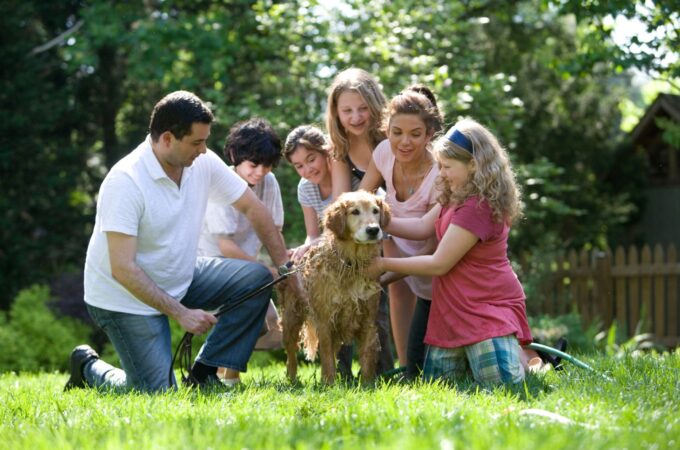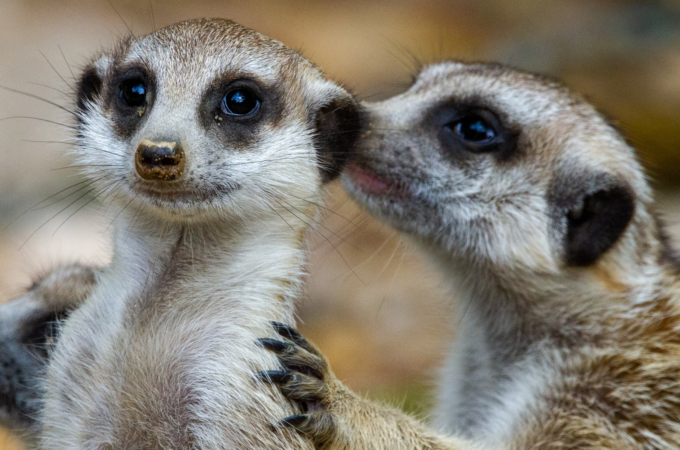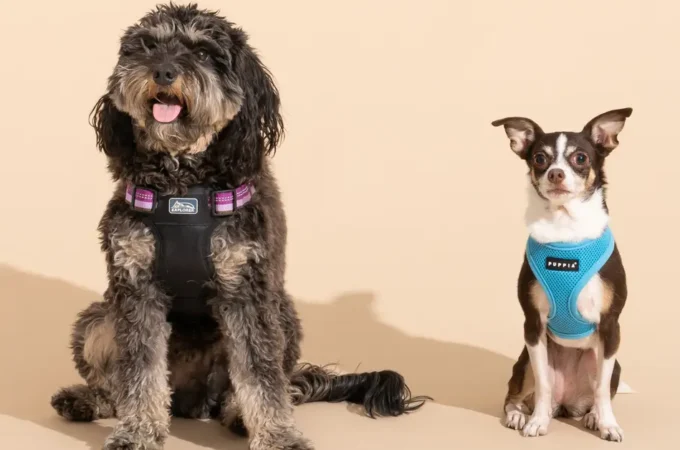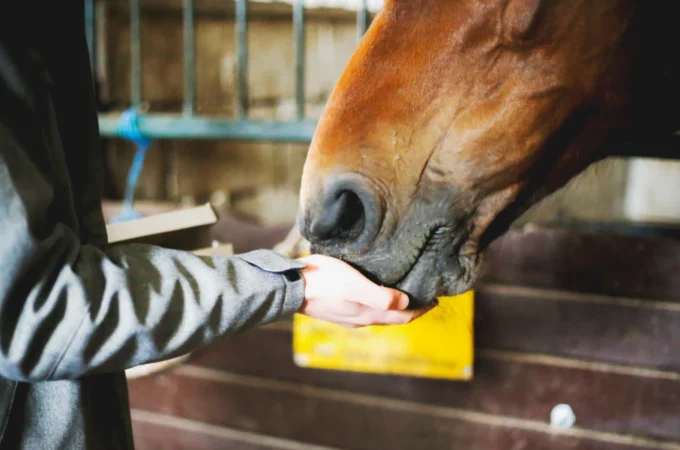
Why Maltipoos Make Great Family Pets
Maltipoos are known as designer dogs mostly because of their origins. They are a crossbreed of the purebred Maltese and the purebred Poodle. A Maltipoo can have either the long, wavy hair of a Maltese or the tight curls of a Poodle depending on the dominant gene. A lot of them have fur that has a bit of both.
If you can find a first-generation Maltipoo, you’ll have the direct pup of these two very popular breeds. A second-generation Maltipoo is the offspring of a mix of two purebred Maltipoos. Nonetheless, they are somewhat of a new breed because their first appeared in America in the early 90s.
Maltipoos have floppy ears, a rounded head, and a tiny figure which make the dogs look like puppies for their whole lives. They are very social, friendly, and outgoing. They are very playful and love to spend time with their humans.
If you’re curious about whether the Maltipoo will be a great addition to your family, read on so you can decide if you’re going to have one call your house, home.
The Looks and Appearance of a Maltipoo

Since Maltipoos are a cross between two different breeds, it’s hard to generalize how a standard Maltipoo should look like. It’s very possible that even Maltipoos of the same litter can grow up to be very different from each other.
The color and size of a Maltipoo are going to be left to the genetics to decide. While the Maltese dog has white fur, poodles come in different shards of white, cream, black, silver, grey, and apricot. As such, your Maltipoo can be any of these colors or a mix of different colors.
But one thing you will be sure of is that you’ll have a small dog. They can grow up to 15 inches tall and weigh as much as 18 pounds. The dog can be even smaller if one of its parents was not a Standard Poodle but a Miniature Poodle instead.
A good idea is to consult a professional breeder if possible and ask them about the size of their Maltipoo puppies or parents so you can have a strong idea of how big they’re going to become.
A Brief Introduction Into the History of the Maltipoo
The practice of crossing different types of dog breeds has existed for thousands of years. People do it so they can try and get a certain temperament, look, or functional ability of a dog. Crossing has led to the emergence of many popular purebreds such as the Doberman Pinscher, Black Russian Terrier, and the Australian Shepherd.
However, crossing two breeds does not make one breed. A breed is a set of animals sharing ancestors or similar characteristics. To achieve consistency in size, temperament, and appearance, breeders have to choose dogs with desirable traits and breed them over and over across several generations.
People want dogs that are different from the expected norm. That’s why crossbreeds like the Maltipoo have increased in popularity over the past couple of decades.
Unfortunately, not much of the Maltipoo’s history can be traced because the breeders were not inclined to record any information regarding its primary genes. There’s also the fact that some breeders simply regard Maltipoos as mutts.
The Maltipoo’s parents however have existed for centuries and were adored by people of royalty. The Poodle, for example, goes back as early as 15th Century France when it was recognized as the country’s national breed.
Their Personality and Temperament

The temperament of a Maltipoo varies with each dog since it is affected both by the environment in which it lives and genetic inheritance.
Genetics suggests that a Maltipoo’s temperament depends on the temperament of its parents, especially the mother since she will have a bigger influence on a puppy’s personality. Both Malteses and Poodles are outgoing, friendly dogs and so are Maltipoos.
Maltipoos are generally lovely and gentle dogs that really enjoy their cuddles. This makes them excellent dogs for families with kids. Older kids tend to be respectful and gentle but younger children may need to be taught how to handle these small dogs appropriately.
If you find a puppy’s parents who shy away, growl, or won’t allow you to approach, you might want to take a second thought about taking those puppies home.
The amount of socialization the dog experiences will also affect the dog’s behavior. So try and involve your puppy from the very first day they’re home. Take your dog for walks and buy toys and balls for it to play with. You can enroll your dog in puppy kindergarten class when your dog turns 11 weeks old so they can socialize with other pups.
General Health of Maltipoos
Every 5 in 10 people inherit a particular condition with a genetic background. Just as we have the potential to develop genetic health conditions, so do dogs regardless of if they’re purebreds or crossbreeds. Avoid any breeder who claims that their dogs are 100% healthy.
But it should be said that there’s a likelihood that the genetic diversity in mixing two breeds may reduce the chances of the offspring developing some inherited conditions.
The good news with Maltipoos is that they are very healthy dogs with very few health concerns issues to be concerned about. But they are prone to the same health problems as both the Poodle and Maltese. Some of the conditions common with Maltipoos include skin irritation, ear infections, white shaker syndrome, and epilepsy.
Since inherited conditions cannot be detected in a growing pup, it’s quite hard to tell if a Maltipoo will be clear of any potential maladies. Because of this, you should find a renowned breeder who’s dedicated to breeding the healthiest of animals.
A professional breeder should provide proof that both of the puppy’s parents have received the right certifications from health agencies such as the Canine Eye Registry Foundation and the Orthopedic Foundation for Animals. Some breeders even provide health documents for the dog’s grandparents including screening tests for genetic concerns.
If a breeder tells you they don’t need to provide certifications since they’ve never had any problems with their Maltipoos, don’t buy from them.
Another factor you need to consider regarding the health of Maltipoos is their lifespan. Being a small dog with rare health concerns, the Maltipoo can live for as long as 15 years. How long the Maltipoo lives depends on the dog’s overall health, exercise schedule, and whether its eating a good diet.
How Much Do Maltipoo Puppies Cost
The cost of buying a Maltipoo puppy ranges between $500 and $2,000. The take-home cost depends on the skill of the breeder, the traits and looks of the puppy’s parents, as well as the pup’s estimated color and size.
Adulting is, however, much cheaper but you may have to pay for certain vaccines such as rabies, parvovirus, and kennel cough.
Grooming and Caring for Your Maltipoo

The grooming needs for this dog vary depending on its coat. While Maltipoos shed almost no fur, don’t get the impression that they rarely need brushing. These dogs need a good brush everyday to stay mat-free and clean. A 10-minute session every day should more than suffice.
You should also trim their coat or else the dog will struggle to keep its hair out of its eyes. A trim every once or twice a year is best.
Maltipoos also need a bath once or twice every 4 weeks. A bathe is the perfect time to inspect the ears for dirt. Use an ear cleaning solution recommended by a vet.
Its teeth need to be brushed several times a week to keep those tiny chompers healthy and clean. Its nails also need to be trimmed at least twice a month. Once you hear their feet click against the floor, then it’s time for a trim.
Apart from regular grooming, Maltipoos also need regular exercise, but not too much for the dog to burn out. A brief walk once a day preceded by a play session can at times help burn off some extra energy.
Maltipoos are Very Family-Friendly
Because of the fact that Maltipoos are a mixed breed, it’s very hard to ‘guesstimate’ what characteristics your Maltipoo will have from each parent. While most Maltipoo puppies get a mix of traits from both, each dog is likely to have its own looks, quirks, and personality.
What you can be certain of, however, is that the only regret you’ll have is why you didn’t get a Maltipoo sooner. They are the perfect addition to any family. They love playing as much as they enjoy being a lapdog for some good old personal time with their owner. They also love going on walks and are great with kids.
Because of their small nature, children can accidentally be too rough on their Maltipoos so try and keep a close eye on the dog and child as they interact and play together.
That being said, Maltipoos make for amazing, wonderful companions who will be filled with excitement every day you come home to your family.




